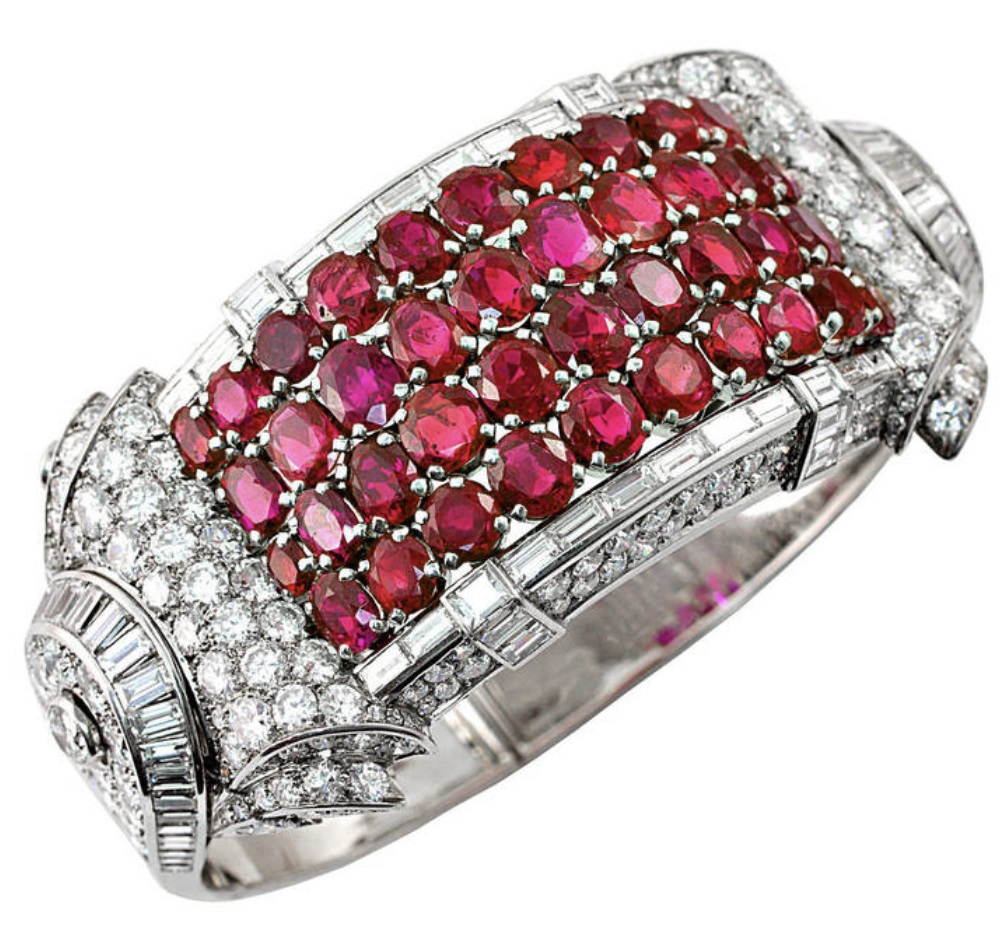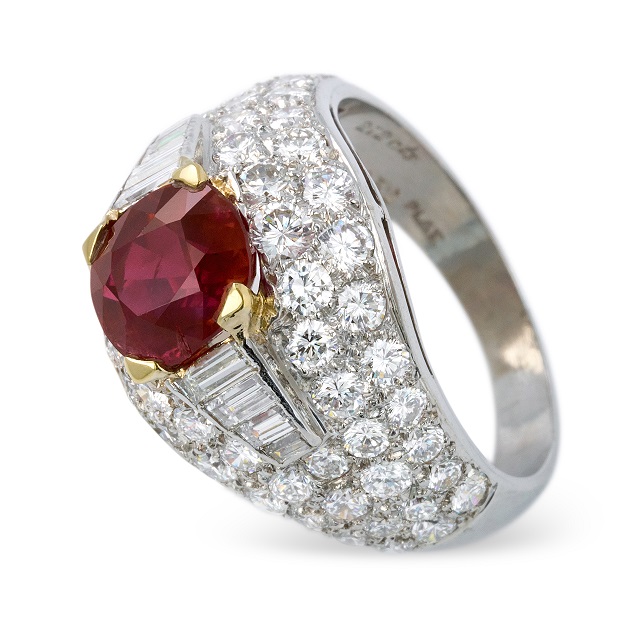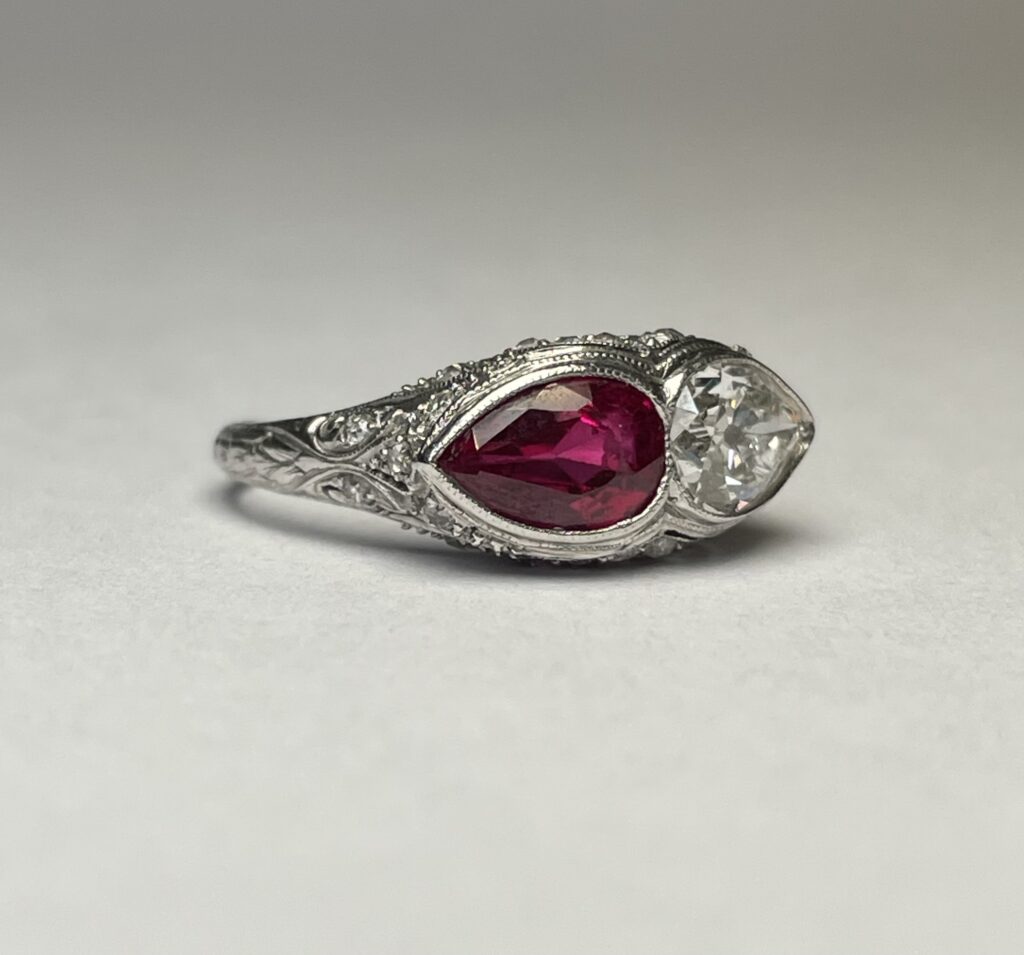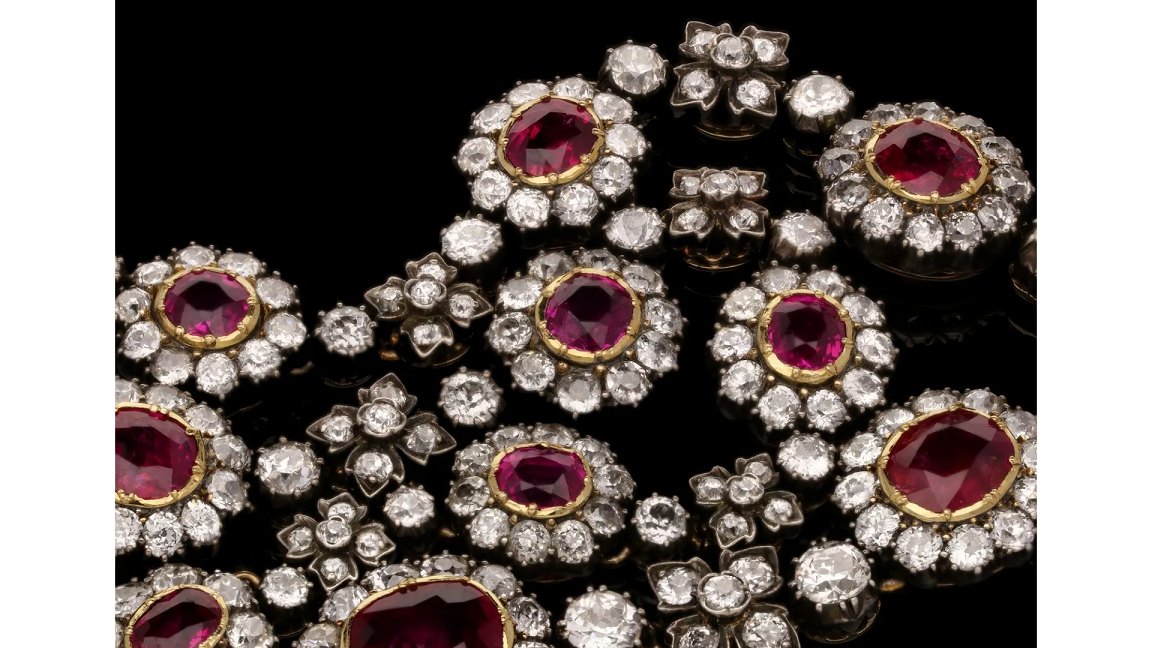
Nestled deep in the mountainous region of the Mogok Valley in Myanmar, formerly known as Burma, you’ll find the legendary mines that produced some of the world’s finest rubies. A very remote area, Mogok is difficult to access and during the rainy season the dirt roads become giant mud pits that are impassable for vehicles. Burma, or Burmese, rubies with their purple red or dark pink red hues are highly prized for their vibrant color. Rubies from Burma have been coveted throughout history, but their availability has gone through many changes over time. The mines were worked by hand for hundreds of years before production dwindled to almost nothing forcing the prices of these red stones up.
All kinds of lore surround Burma rubies. The Mogok mines have been a source of rubies for over 800 years and they’ve often been closely guarded with sporadic production. The rubies are so important to the area, that according to legend one of the early rulers of the country didn’t want the stones to leave the nation as he thought that it would drain his power. Burmese warriors believed that the painful process of inserting a piece of ruby into their flesh, so that it became part of their body, would make them invincible in battle. In medieval Europe, rubies were highly desired as they were thought to endow the owner with good health, wealth, wisdom and love.
Burma Rubies Are Rare
“Burma rubies from Mogok are unusual because they are no longer being mined,” comments Steven Fearnley, owner J.S. Fearnley in Atlanta. “Add to that the political unrest in the country and nothing is coming out of there, which makes those rubies very rare. Like any mine you will have various qualities of material, but something with a true red color and good clarity adds to the rarity.”

Rubies from Burma have had numerous challenges to leaving the country. In 1597, the mines were taken over by the King of Burma and the mines were worked by locals for years. Then in 1886 the British annexed upper Burma, where the Mogok mines are located, to its colony, India. The British took over the mines and then leased them to a jeweler in London, Edwin Streeter for seven years. The mining operations were greatly amped up during this time, but numerous challenges such as theft and flooding eventually led to their closure in 1931 when the mines were turned back over to the government. By now Burma rubies were showing up in jewelry all over Europe and through the world with their exceptional color sparking desire for these gems. Mining continued until it was interrupted by World War II. The mines reactivated after that and were quite prolific until the communist regime took over the country in 1963 and nationalized the mines. Burma rubies were not allowed in the U.S. between 2008 and 2016, when they were embargoed due to human rights issues in the country.
“The cult of Burmese rubies has two parts,” says New York-based dealer Richard Buonomo. “One part is the true quality of the gem and the other part is the history and legend. The best rubies are old material from the Mogok mines, while some rubies from there are not as good, their Burmese origin gives them panache and value. It is origin that dictates value and desirability.”
Burma Ruby Fluorescence

So what is it that gives Burma rubies their exceptional color, often called “pigeon’s blood” because the color is the same as the blood of a pigeon? Rubies get their red color from trace elements of chromium, which also causes fluorescence making the red appear more intense and glowing with an inner light. Burma rubies also have specific silk inclusions that help to identify them as coming from that country. How will you know that a ruby is from Burma? The only way to really be sure is to request a report from a reputable gemological laboratory that includes country of origin.
Today, rubies continue to come out of Burma, but now they come from the Mong Hsu region where mining started in the 1990s. However, most of the rubies that are found in vintage or antique jewelry come from the storied Mogok mines that have set the standard for ruby beauty.
“Burma will always be the penultimate standard for a good looking ruby,” concludes Buonomo.
Featured image (top of page): Victorian unheated Burma ruby, diamond, 18-karat gold and silver necklace, French, 1870, courtesy Hancocks of London (@hancocks_london).
Authored by Amber Michelle
